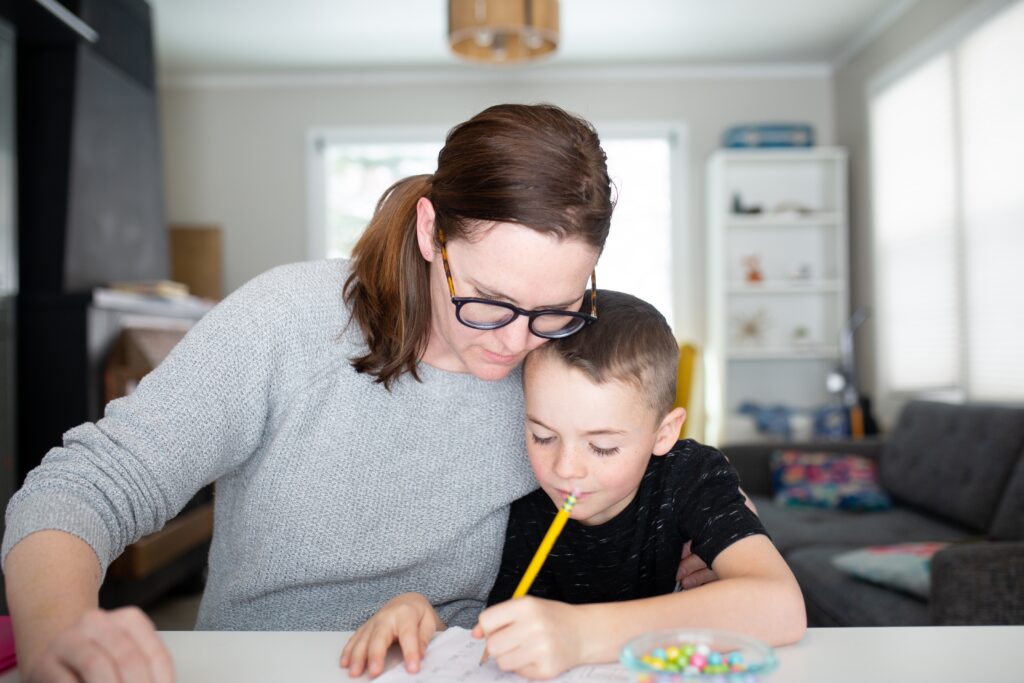With traditional schools forced into virtual schooling, many parents have a new interest in homeschooling. If you find yourself interested in homeschooling but aren’t sure where to start, we can help. There are many different styles of homeschooling. The trick is to find the one that works best for you.
What Are the Different Styles of Homeschooling?
As you likely know, every child learns differently. Thankfully there are a variety of different styles for homeschooling. Due to the flexibility that homeschooling brings, you can work with your student to find what works for them.
School at Home
The most simple of homeschooling options is to do all schooling at home with your chosen curriculum. Typically when people say they’re doing school at home, they mean they’re attempting to mimic a traditional school setting at home.
Benefits:
You get a lot of flexibility in this style of homeschooling. While you still need to abide by your state’s requirements, this option puts you as their teacher and gives you the option to choose which curricula you use with your students.
School at home is an excellent option for parents who have a specific learning style they would like their students to experience. It also puts the parent in the driver’s seat more so than other options.

Drawbacks:
It can be overwhelming to be the sole educator for your child. There will be days when your child just isn’t interested in doing school work, just like kids who go to traditional school. You’ll likely have a few days where it’s like pulling teeth to finish school for the day. Additionally, there will inevitably be days when you, as the parents, aren’t feeling school either. Thankfully homeschooling is flexible, allowing you to change it up if you have an “off” day.
Unit Studies
Unit studies are a great way to focus on a single topic area, allowing students to dive into easily overlooked details. It’s an immersive approach to learning a topic.
Benefits:
Unit studies are especially great for homeschooling families. If you know you’ll be going to an educationally rich location, you can do a unit study on the area beforehand. This allows you to get a detailed look at the geography and history of an area. Once you arrive, you’ll appreciate the landscape and history even more.
Many children and adults are visual learners, making unit studies and travel a great pairing. Unit studies spill over into all areas of education. For example, if you visit Zion National Park, you can learn the geography of the area and history of the park and even use spelling words associated with the park.
Drawbacks:
Unit studies can take a lot of work on behalf of the parent. There’s usually a lot of prep work to personalize the experience.

Classical Homeschooling
Classical homeschooling is a style based on the three areas of grammar, dialectic, and rhetoric. It uses the way a child’s brain works and the different stages of their development to meet their educational needs.
Benefits:
This is especially beneficial for children who are academically developing above or below average. You can assess where your child is developmentally and customize their learning to ensure they’re grasping concepts. Children move through each stage at their own pace. The classical homeschooling method allows for that without boring the student or leaving them behind.
Drawbacks:
This method can be a bit tricky and involve a lot of monitoring to be sure you’re noticing your child’s development. It’s high in teacher/parent involvement, which isn’t appealing to all parents.
Pro tip: Don’t Forget to Add These Items to Your Virtual School Supply List
Charlotte Mason
The Charlotte Mason method of homeschooling states that a child is a person, and we must educate the whole person, not just their mind. Among the different styles of homeschooling, this one takes a unique approach.
Benefits:
The three core areas of this method are atmosphere (surroundings), discipline (good habits), and life (academics). This method provides an excellent, well-rounded education. Many parents choose to homeschool their children because they want to help ensure their child is proficient in all areas, not just academics.
Drawbacks:
This method of homeschooling requires a lot of parent involvement. Parents are typically fully engaged in the entire learning process. This isn’t the desired style of a parent who wants to teach a quick lesson and let the child work on a worksheet to reinforce the topic. This method involves parent conversation and leading.
Unschooling
Unschooling allows children to learn informally according to what’s of interest to them at any given time.
Benefits:
All people learn best when it’s something that excites them. When children start to show an interest in something, parents can engage them in that subject and apply it to their lives. For example, if a child asks questions about the weather, the child and parent can create further learning opportunities and possibly even informal unit studies surrounding the topic.
Drawbacks:
While this homeschooling style may seem rather hands-off for the parent, it requires quite a bit of parent involvement. Parents will need to pay close attention to what questions their children ask and their interests. As children show interest in topics, it will be up to the parent to lead the child in further learning in the area of interest.

Eclectic
Eclectic learning is a mishmash of different styles of homeschooling. When parents say they have an eclectic approach to homeschooling, they don’t follow any specific schooling method and instead mix and match as they find what works for them.
Benefits:
Students often feel drawn to one curriculum style for one subject but have a different learning style for another. Those participating in a more eclectic style will engage in various programs and curricula, switching it up as necessary. This is great for creating a customized learning environment for each student.
Drawbacks:
This style of learning can sometimes feel like a chaotic mess. You’re keeping track of several different curricula, and things can get cluttered. It can also feel a little overwhelming for parents to switch things up year to year as preferences change continually.
Montessori
Montessori is a very hands-on student-lead style of education.
Benefits:
Montessori is great for students who like to take charge of their own education. Students direct the learning experience and parents provide the tools to help them be successful. It’s very similar to unschooling, except parents tend to also curate specific learning environments for topics they want their child to study. For example, if a parent wants their child to learn about trees, they could take them to a greenhouse to explore and see various types of trees. From there, the parent encourages study based on their interests.

Drawbacks:
If a student doesn’t take an interest in self-exploration, this can lead to frustration for both the student and parent. If your student tends to answer with, “I don’t care” or “I don’t know” when asked their preferences, this might not be the style for you.
Why Do Parents Choose Homeschooling Over Traditional Education?
There are many reasons parents might choose homeschooling over traditional education. While some may choose homeschooling due to a lack of trust or interest in the conventional school setting, that’s only one of the reasons. Homeschooling provides a lot of flexibility in a family’s schedule.
Whether due to a parent’s work schedule or the desire to travel without regard to a traditional school calendar, homeschooling gives the parents more control over the days and times their student is learning. Additionally, parents are more in control of what and how their students are learning.
What Kind of Homeschooling Works Best for Traveling Families?
Any style of homeschooling that doesn’t require a fixed location is a great option for traveling families. Styles that require meeting up with a group will prove counterproductive to families who choose to homeschool so they can travel. Outside of the different styles of homeschooling that require a stationary lifestyle, families may go through a bit of trial and error through several styles to discover what works best for them.

When Is Homeschooling Your Kids a Good Option?
Homeschooling could be great if traditional schooling doesn’t work with your family’s schedule or educational preferences. Whether you’re looking to travel full-time or the student is simply struggling with traditional learning, choosing to homeschool can open many possibilities. Homeschooling leads to more positive results when both the parent and student commit to it. If either party is adamantly opposed, it may take extra work to get the hesitancy to go away.
Find The Right Homeschooling Style
Homeschooling can be an enriching experience for both students and parents, especially when coupled with travel. You just have to find the right style for everyone involved in the process. Have you considered homeschooling your child on the road?

Leave a Reply